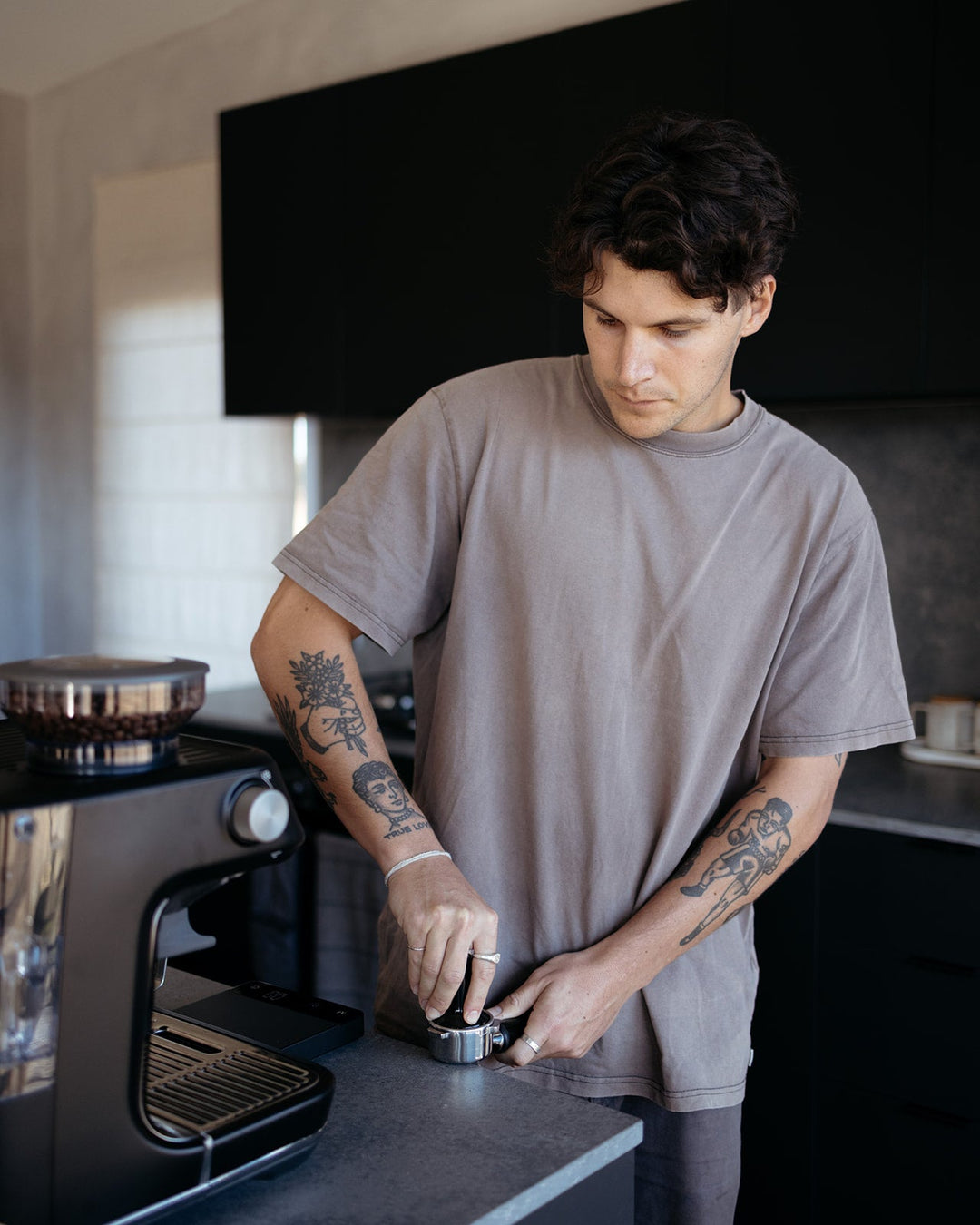How SOE Single Origin Espresso Improves Your Wake-Up Brew
How SOE Single Origin Espresso Improves Your Wake-Up Brew
Blog Article
Understanding Coffee Beans: the Trip From Espresso to Blended Coffee Beans

The Origins of Coffee: A Worldwide Perspective
While you could believe of coffee as a modern-day staple, its beginnings map back centuries, intertwining with societies throughout the world. The tale starts in Ethiopia, where tale claims a goat herder named Kaldi discovered the invigorating impacts of coffee beans after discovering his goats frolicking vigorously after consuming them.
As profession paths increased, coffee made its way to Europe in the 17th century, promptly gaining appeal. Each culture included its distinct twist to coffee prep work, improving its background.
Cultivation and Harvesting of Espresso Beans
As coffee's journey developed, the focus changed to the cultivation and harvesting of certain bean ranges, especially those used for coffee. You'll locate that espresso beans typically come from Arabica or Robusta plants, each offering distinct tastes. The perfect expanding problems consist of high elevations and rich, well-drained soil, which boost the beans' high quality.
Throughout the harvest, choosing methods vary. Timing is vital; you desire to collect when the cherries reach peak ripeness for optimum flavor.
When gathered, the beans are prepared for processing, which is necessary in establishing their last preference. Recognizing the growing and gathering processes gives you insight right into what enters into your preferred espresso, enhancing your gratitude for each and every cup.
Handling Techniques: From Cherry to Bean
Since you have actually learnt more about gathering coffee beans, let's check out just how those cherries transform right into the coffee beans you love. You'll see how different harvesting methods impact taste, complied with by the crucial actions of fermentation and drying out. Finally, we'll break down the milling and grading process that identifies your coffee's quality.
Gathering Methods Explained
When it comes to coffee, understanding harvesting methods is crucial, since they straight impact the taste and top quality of the beans you enjoy. Selective selecting involves hand-picking just ripe cherries, guaranteeing you get the ideal high quality beans. Eventually, the selection of gathering method can considerably influence your coffee experience, so it's worth recognizing exactly how those beans made it to your cup.
Fermentation and Drying
After harvesting, the following steps in processing coffee beans play a significant role in shaping their flavor. You'll find that fermentation is crucial, as it aids damage down the mucilage bordering the beans, boosting their preference account. Depending on the approach, this process can last from a couple of hours to a number of days, with varying results based on temperature and humidity.
Sun-drying enables the beans to absorb tastes from the environment, while mechanical drying out assurances consistent moisture degrees regardless of weather. Proper drying is necessary to prevent mold and mildew and preserve the beans' top quality, eventually influencing your cup of coffee.
Milling and Grading Refine
As fermentation and drying set the phase for flavor advancement, the milling and grading process guarantees that only the ideal coffee beans make it to your mug. This phase involves getting rid of the external layers of the coffee cherry, including the parchment and husk. High-quality beans get a higher quality, resulting in a richer coffee experience.
Roasting Techniques: Unlocking Taste Prospective
When you roast coffee beans, the approach you choose can significantly affect the taste account. Comprehending the connection in between time, temperature level, and roasting techniques is essential to disclosing the potential of your mixture. Allow's check out just how these components come with each other to develop the excellent cup.
Toasting Methods Clarified
While you could believe that all coffee toasting techniques yield the very same results, the reality is that each technique exposes special flavor possibilities in the beans. Drum toasting makes use of a revolving drum to uniformly disperse warm, boosting caramelization and creating a well additional info balanced taste. Air roasting, on the various other hand, circulates warm air around the beans, advertising a lighter roast with obvious acidity.

Effect On Flavor Account
Different roasting techniques not only affect the process yet likewise substantially influence the taste account of the coffee beans. When you pick a light roast, you'll experience brilliant level of acidity and floral notes, showcasing the bean's origin. In comparison, a medium roast equilibriums acidity with sweetness, commonly disclosing chocolatey undertones. Dark roasts, on the various other hand, bring out vibrant, great smoky tastes, often concealing the bean's unique characteristics. Each strategy discloses different oils and compounds, causing a wide variety of flavors. By trying out numerous toasting designs, you can find which profiles reverberate with your taste. Comprehending these nuances aids you value the artistry behind your mug of coffee, boosting your total experience with every sip.
Time and Temperature Variables
To launch the complete taste possibility of coffee beans, both time and temperature during the roasting process play considerable roles. When roasting, you'll find that higher temperatures can quickly establish tastes, yet if you rush it, you may wind up with burnt notes. Alternatively, reduced temperature levels allow for a much more steady flavor development, showcasing the beans' special attributes.

Timing is just as important; extending the roast as well long can result in a loss of level of acidity and illumination, while too brief a roast might leave the beans underdeveloped. Discovering that wonderful area needs technique and trial and error. By changing these factors, you can expose the rich, complicated flavors hidden within each bean, developing an absolutely remarkable coffee experience.
The Art of Blending: Crafting Special Coffee Profiles

Begin by picking a base coffee that supplies a strong structure. After that, choose corresponding beans to enhance details flavor notes. As an example, an intense Ethiopian bean can bring fruitiness, while an abundant Brazilian coffee includes body. Experimentation is essential-- do not be scared to readjust proportions up until you find your suitable profile.
As you mix, bear in mind that each mix narrates. You're not simply making coffee; you're developing an experience. So, take your time, taste regularly, and take pleasure in the trip of discovering your trademark blend.
Brewing Techniques: Exactly How Preparation Impacts Flavor
Mixing coffee opens a domain name of flavor opportunities, yet just how you make that click to investigate mix can significantly affect your last mug. Various brewing techniques draw out unique tastes and aromas, so it's critical to select sensibly. For example, a French press enables sediments and oils to stay, producing a rich, robust experience. On the other hand, a pour-over highlights the coffee's clearness and brightness, excellent for showcasing fragile notes.
Espresso, with its high pressure, creates a focused shot that accentuates sweet taste and crema. If you favor a lighter brew, think about a cold mixture method; it produces a smooth, less acidic preference.
Changing variables like water temperature level, grind dimension, and brew time can change your coffee's account. Accept the art of developing to discover the flavors concealed in your coffee blends.
The Future of Coffee: Sustainability and Innovation
As the coffee sector evolves, sustainability and advancement are becoming crucial for resolving environmental challenges and meeting consumer demands. You'll see that more coffee firms are embracing environment-friendly practices, from sourcing beans ethically to implementing sustainable farming methods. These shifts not just aid the earth yet additionally improve the high quality of the coffee you take pleasure in.
You might see innovations like eco-friendly product packaging and water-saving brewing techniques that reduce waste. Advanced modern technology, such as blockchain, is additionally coming to be preferred, making sure openness in the supply chain, which allows you to map your coffee back to its beginnings.
In addition, buying neighborhood communities and sustaining farmers via reasonable profession campaigns fosters a more sustainable coffee click to find out more ecosystem. As you sip your following mug, keep in mind that your options can contribute to a brighter future for coffee. By deciding for sustainable brands, you're not simply appreciating a drink; you're making a positive effect on the globe.
Frequently Asked Concerns
What Is the Difference Between Arabica and Robusta Beans?
Arabica beans are smoother, sweeter, and have a higher acidity, while robusta beans are stronger, extra bitter, and include even more high levels of caffeine. When brewing your coffee., you'll discover these differences in flavor and fragrance.
Just How Does Elevation Affect Coffee Bean Taste?
Altitude effects coffee bean taste significantly. Higher altitudes create beans with brighter acidity and facility tastes, while reduced altitudes commonly produce beans that are larger and much less nuanced. You'll discover these distinctions in your mug!
What Are the Health And Wellness Perks of Drinking Coffee?
Consuming alcohol coffee can boost your power, improve mental emphasis, and even boost physical performance. It's abundant in anti-oxidants, might reduce the danger of specific conditions, and can advertise a healthier metabolism when eaten in moderation.
Can Coffee Beans Be Recycled for Brewing?
Yes, you can recycle coffee beans for developing, but the taste could be weak. If you appreciate experimenting, try recycling them in various ways, like chilly mixtures or including in shakes for an additional kick.
Just how Should I Store Coffee Beans for Freshness?
To keep your coffee beans fresh, keep them in a closed container in a cool, dark area. Prevent revealing them to moisture, warmth, or light, as these aspects can quickly deteriorate their taste and aroma.
Understanding Coffee Beans: the Journey From Espresso to Blended Coffee Beans.
Now that you have actually found out concerning collecting coffee beans, let's explore exactly how those cherries transform into the coffee beans you enjoy.When you roast coffee beans, the method you select can substantially influence the flavor profile - Single Origin Espresso.While you may assume that all coffee roasting methods generate the same outcomes, the truth is that each method reveals distinct flavor possibilities in the beans.Various roasting methods not just influence the procedure however likewise greatly impact the flavor profile of the coffee beans
Report this page